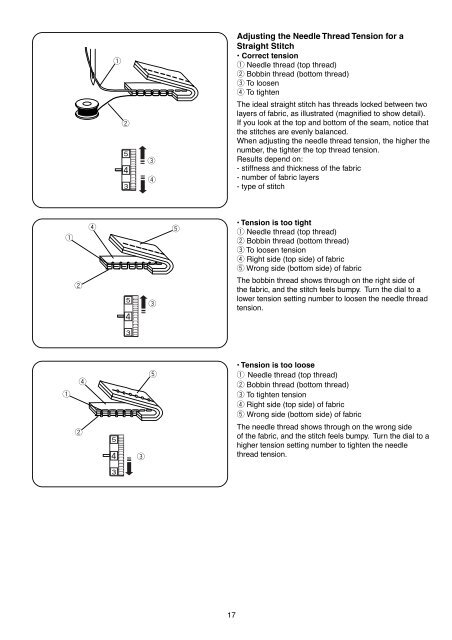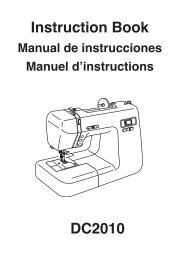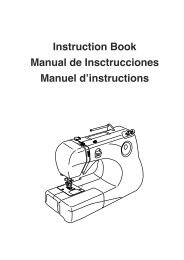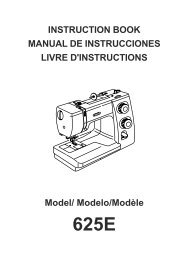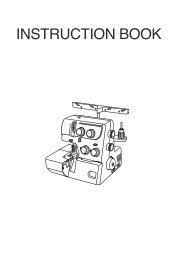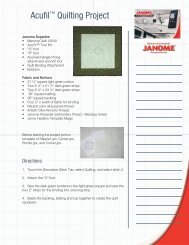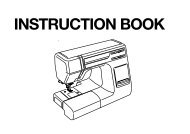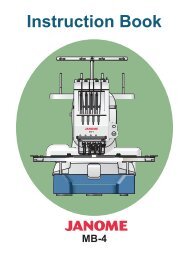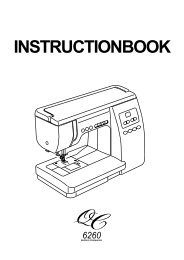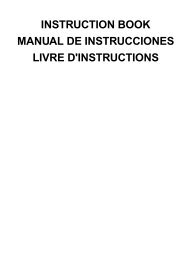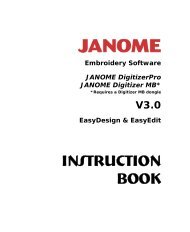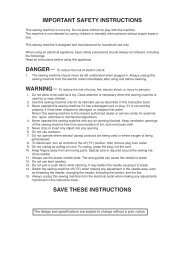INSTRUCTION BOOK - Janome
INSTRUCTION BOOK - Janome
INSTRUCTION BOOK - Janome
You also want an ePaper? Increase the reach of your titles
YUMPU automatically turns print PDFs into web optimized ePapers that Google loves.
q<br />
q<br />
w<br />
w<br />
r<br />
r<br />
q<br />
w<br />
e<br />
e<br />
r<br />
e<br />
t<br />
t<br />
17<br />
Adjusting the Needle Thread Tension for a<br />
Straight Stitch<br />
• Correct tension<br />
q Needle thread (top thread)<br />
w Bobbin thread (bottom thread)<br />
e To loosen<br />
r To tighten<br />
The ideal straight stitch has threads locked between two<br />
layers of fabric, as illustrated (magnified to show detail).<br />
If you look at the top and bottom of the seam, notice that<br />
the stitches are evenly balanced.<br />
When adjusting the needle thread tension, the higher the<br />
number, the tighter the top thread tension.<br />
Results depend on:<br />
- stiffness and thickness of the fabric<br />
- number of fabric layers<br />
- type of stitch<br />
• Tension is too tight<br />
q Needle thread (top thread)<br />
w Bobbin thread (bottom thread)<br />
e To loosen tension<br />
r Right side (top side) of fabric<br />
t Wrong side (bottom side) of fabric<br />
The bobbin thread shows through on the right side of<br />
the fabric, and the stitch feels bumpy. Turn the dial to a<br />
lower tension setting number to loosen the needle thread<br />
tension.<br />
• Tension is too loose<br />
q Needle thread (top thread)<br />
w Bobbin thread (bottom thread)<br />
e To tighten tension<br />
r Right side (top side) of fabric<br />
t Wrong side (bottom side) of fabric<br />
The needle thread shows through on the wrong side<br />
of the fabric, and the stitch feels bumpy. Turn the dial to a<br />
higher tension setting number to tighten the needle<br />
thread tension.


